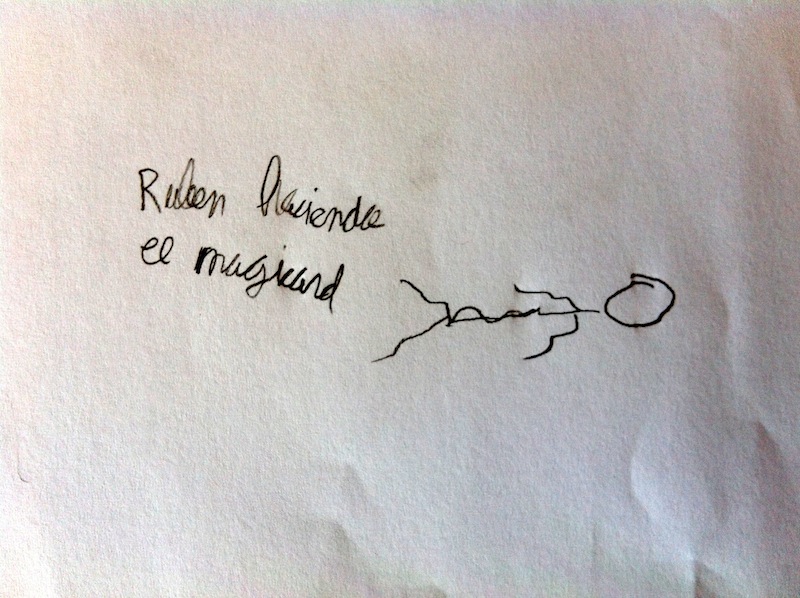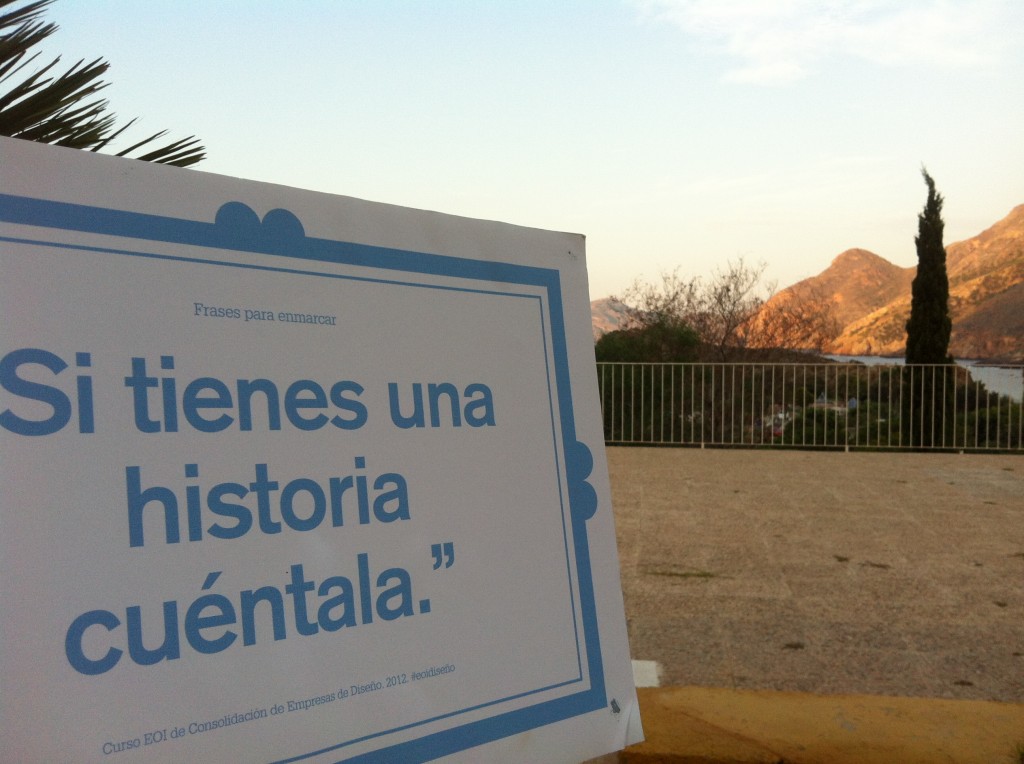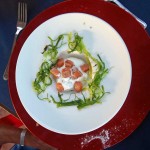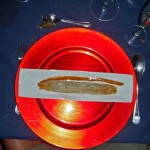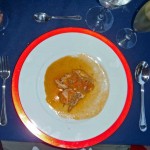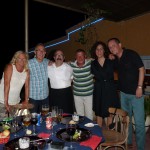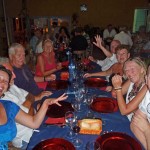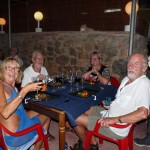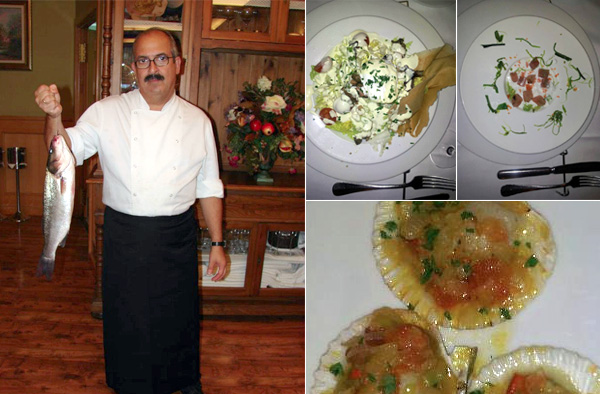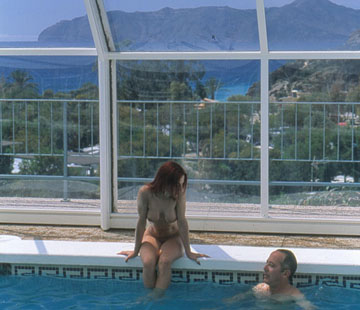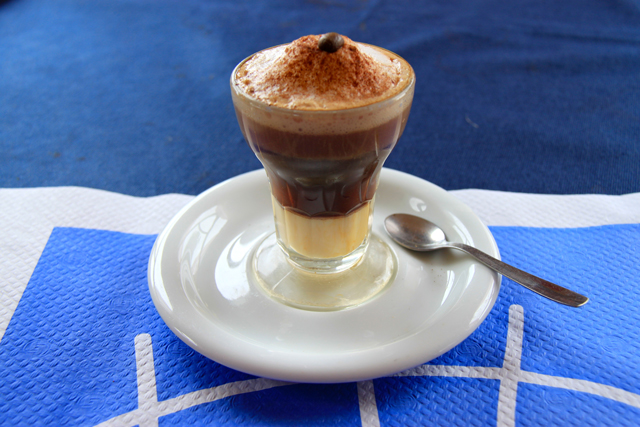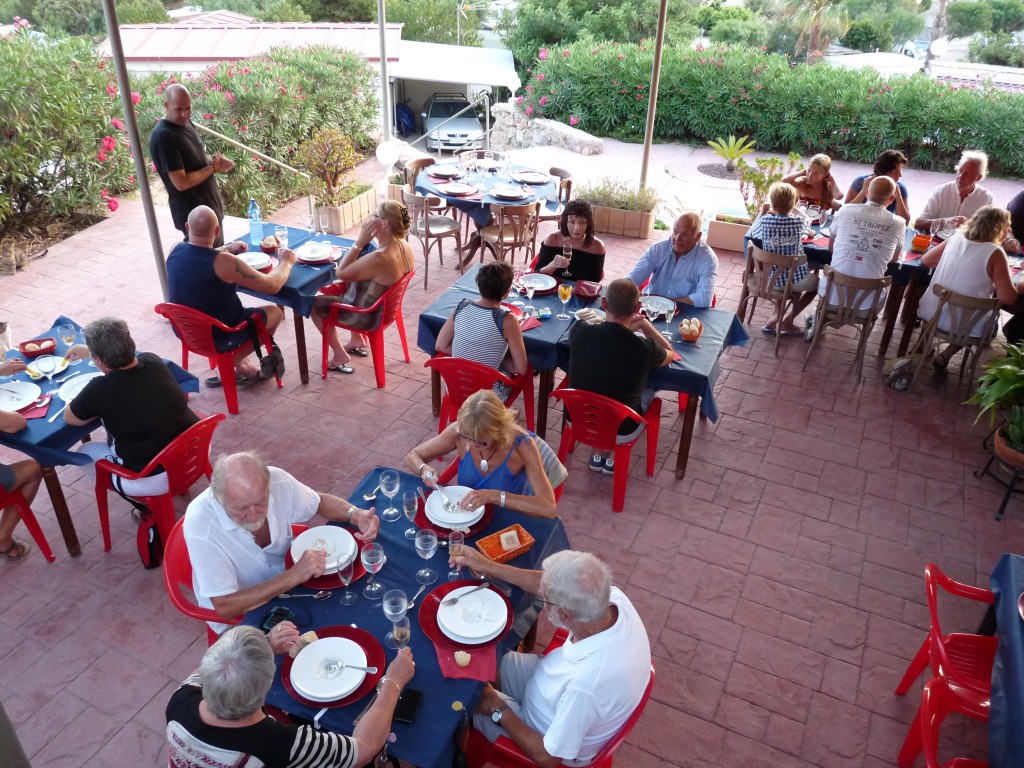
Casi exhausto, después de preparar ocho platos a cada uno de los sesenta afortunados comensales que asistimos al ágape, el chef se acercó a las mesas para oir las impresiones del personal.
Todo muy rico, exquisito, ¡vaya homenaje!… y muchas más expresiones de satisfacción escuchó nuestro querido chef Alfonso Ortega, al salir de la cocina del restaurante del Camping El Portús.
La cita era a las 20.30h, pero Moncho, nuestro gerente del restaurante, nos pidió a los comensales españoles que retrasáramos la llegada para no colapsar el servicio. Así todos contentos; los españoles somos, seguramente, los europeos que más tarde cenamos…
Todo empezó con un aperitivo sorprendente: “explorador con guacamole y chips de plátano”, una mezcla de dulce, salado y picante, premonición de la sinfonía de sabores que iban a degustar a lo largo de la velada nuestros afortunados paladares.
El salmón marinado con crema fresca y algas era un prodigio de presentación y de sabor. Un guiño a los famosos blinis escandinavos. Así llegamos a la pechuga de pollo de corral escabechada con foie. Para mí el momento culmen de la cena. Un plato digno de estrella Michelín. Sutil, tierno, refrescante, intenso… ¡qué rico!
Al crujiente de ternera argentina con curry no le faltaba originalidad, y con ese toquecito de picante…
Llegamos a los tortelinis rellenos de trufa con salsa de setas. Alguien criticó que éstas no tuvieran nombre y apellidos. Pero a esas alturas podíamos perdonar el anonimato de las setas.
Para refrescar y podernos enfrentar al contundente plato principal, Alfonso nos propuso una pequeña ensalada de parmesano y mayonesa de anchoas: un prodigio de sencillez y sutileza.
Por último la carrillera de cerdo ibérico confitado, un plato elaborado y muy equilibrado. Séptimo de la noche. Algunos ya no podían levantar ni el tenedor…
El postre resucitó a más de uno. No era para menos. Unas sencillas natillas de vainilla con helado de turrón, tostaditas al estilo de la crema catalana fueron el final feliz que toda historia gastronómica requiere. Inolvidables
Queremos agradecer a Alfonso su generosidad al regalarnos este homenaje gastronómico.
Para los que queráis continuar disfrutando del sabor de su cocina no dejéis de visitarlo en :
La Cocina de Alfonso
Paseo Alfonso XIII, 40 (junto al Hotel Alfonso XIII)
Cartagena
Tf 968 320036
Cierra agosto
Aurelio Vaquero
Dinner with Alfonso
Almost exhausted, after eight courses to prepare for each of the sixty lucky diners who attended the banquet, the chef came to the table to hear the impressions of staff.
All very rich, exquisite, what a blast! … And many more expressions of satisfaction heard our beloved chef Alfonso Ortega, leaving the restaurant kitchen of Camping El Portus.
The appointment was at 20:30, but Moncho, our restaurant manager asked us to delay Spanish diners arrival to avoid overburdening the service. So everyone is happy, the Spanish are, surely, Europeans who later dinner…..
It all started with a surprising appetizer: «explorer with guacamole and plantain chips», a mixture of sweet, salty and spicy, premonition of the symphony of flavors that would taste throughout the evening our lucky palates.
The salmon marinated with fresh cream and seaweed was a marvel of presentation and taste. A nod to the famous Scandinavian blinis.
Thus we range chicken breast marinated with foie. For me was the climax of the dinner. A dish worthy of a Michelin star. Subtle, sweet, refreshing, intense … yummy!
The crispy curry Argentina beef lacked not originality, and with that hint of spicy…
That followed the tortellini filled with truffle and mushroom sauce. Someone criticized that they have no name. But at this point we could forgive the anonymity of the mushrooms.
To refresh and to be able to face the overwhelming main, Alfonso offered us a small salad with parmesan and anchovy mayonnaise: a marvel of simplicity and subtlety.
Finally the Iberian pork cheek confit, a dish prepared and very balanced. Seventh dish of the night. Some of us could no longer even lift the fork…
The dessert raised more than one. No wonder. A simple vanilla custard with nougat ice cream, chips style crème brûlée was the happy ending that all gastronomic events require. Unforgettable
We thank Alfonso his generosity giving us this tribute gastronomy. For those who want to continue enjoying the taste of his cuisine, do not fail to visit him in:
La Cocina de Alfonso
Paseo Alfonso XIII, 40 (next to the Hotel Alfonso XIII)
Cartagena
Tf 968 320036
Close in August
Aurelio Vaquero


